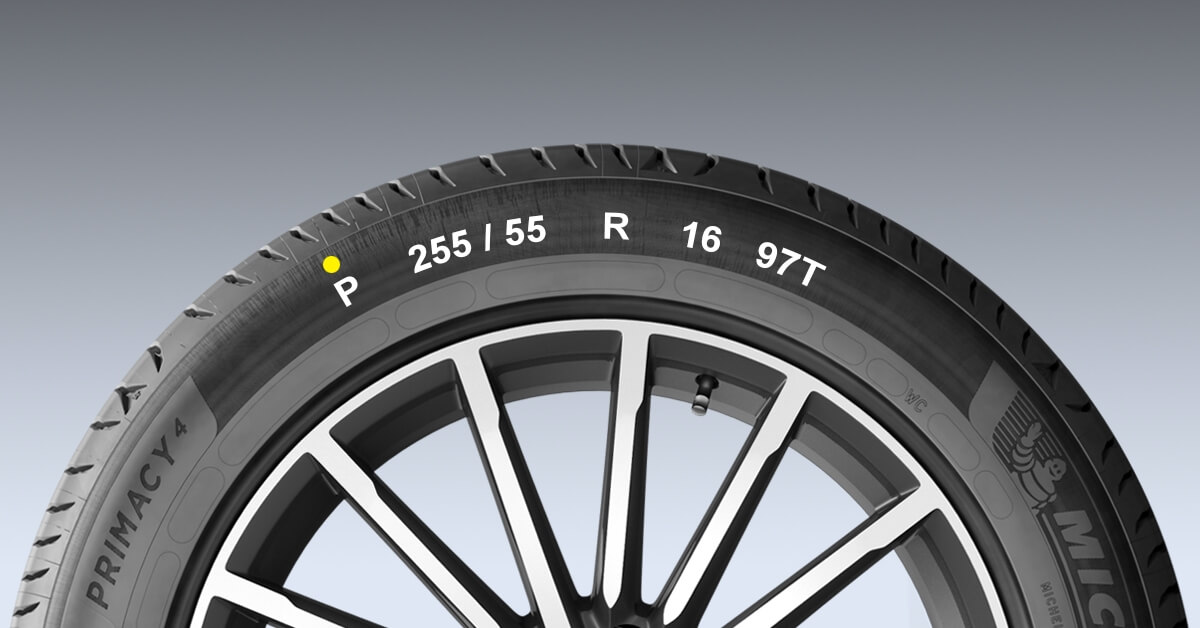Load Index and Speed Rating
Know all about tyre load index and speed rating

Find your tyre
READ THE DIMENSIONS OF TYRES

The tyre load index and speed rating make up the tyre service description which is a standardized number located next to the size on the sidewall of the tyre. The sidewall consists of information mentioned in alphanumeric format like the one shown in this example - 235/55 R18 100V.
Here the last part i.e. 100V represents the load index and the speed rating. When replacing Original Equipment tyres, knowing this service description information is essential. Let us learn about its importance in detail here.
What Is Tyre Load Index
The maximum load a tyre can take at maximum safe inflation is indicated by the load index which is specified on the sidewall of the tyre.
Here is an example to help you easily understand how to find your tyre load index.
Example:
Consider your sidewall markings are as follows- 235/55 R18 100V, the load index 100 corresponds to 1764 lbs as indicated in the chart below. Hence, if you have 4 tyres on your car each of load index 100, then the total load your car can safely carry is 1764 x 4 = 7056 lbs. This total weight that the four tyres of your car can together carry has to be greater than or atleast equal to the gross vehicle weight, otherwise, the tyres will not be able to carry the vehicle weight which will directly affect safety. Hence, it is essential that you match the load index of your tyre with the one specified by your vehicle manufacturer.
Tyre Load Index Chart
|
Load Index |
lbs |
kg |
Load Index |
lbs |
kg |
|
71 |
761 |
345 |
91 |
1356 |
615 |
|
72 |
783 |
355 |
92 |
1389 |
630 |
|
73 |
805 |
365 |
93 |
1433 |
650 |
|
74 |
827 |
375 |
94 |
1477 |
670 |
|
75 |
853 |
387 |
95 |
1521 |
690 |
|
76 |
882 |
400 |
96 |
1565 |
710 |
|
77 |
908 |
412 |
97 |
1609 |
730 |
|
78 |
937 |
425 |
98 |
1653 |
750 |
|
79 |
936 |
437 |
99 |
1709 |
775 |
|
80 |
992 |
450 |
100 |
1764 |
800 |
|
81 |
1019 |
462 |
101 |
1819 |
825 |
|
82 |
1047 |
475 |
102 |
1874 |
850 |
|
83 |
1074 |
487 |
103 |
1929 |
975 |
|
84 |
1102 |
500 |
104 |
1984 |
900 |
|
85 |
1135 |
515 |
105 |
2039 |
925 |
|
86 |
1168 |
530 |
106 |
2094 |
950 |
|
87 |
1201 |
545 |
107 |
2149 |
975 |
|
88 |
1235 |
560 |
108 |
2205 |
1000 |
|
89 |
1279 |
580 |
109 |
2271 |
1030 |
|
90 |
1323 |
600 |
110 |
2337 |
1060 |
What Is Tyre Speed Rating?
A car tyre’s speed rating is the maximum speed that a tyre can travel at its rated load. For eg: a 100V tyre can travel consistently at 240 KM/H with 1764 pounds of load per tyre as long as the tyre does not have any other issues.
But what happens if you go faster? And does the tyre speed rating matter?
To answer this we need to understand what happens if the tyre heats up. When a car is travelling at a certain speed, the tyre will make numerous revolutions per second. That means each section of the tyre tread is slamming at the ground deforming against the road several times per second. This deformation heats the tyre up and the faster you go the harder the tyre gets. As you exceed the tyre speed rating the heat continues to build up and if you keep exceeding, eventually the tyre’s compounds will get too hard and start to break down and the tyre could fail. That’s why it’s important to follow speed rating. You can use the below chart to check the speed rating hierarchy. It's important to remember that speed ratings only apply to tyres that haven't been damaged, are properly inflated and are not overloaded.
Tyre Speed Rating Chart
|
Vibe |
Maximum Speed |
|
|
L |
120 km/h |
|
|
M |
130 km/h |
|
|
N |
140 km/h |
|
|
Q |
160 km/h |
|
|
R |
170 km/h |
|
|
S |
180 km/h |
|
|
T |
190 km/h |
|
|
U |
200 km/h |
|
|
H |
210 km/h |
|
|
V |
240 km/h |
|
|
Z |
240+ km/h |
|
|
W |
270 km/h |
|
|
Y |
300 km/h |
|
|
(Y) |
300+ km/h |
|
Here are some commonly asked questions about load index and speed rating
1. Is it OK to install tyres with a greater speed rating than I require?
Yes, you can fit tyres with a higher speed rating as long as they're appropriate for your car.
2. Is it OK to install tyres with a lower speed rating than I require?
Never install tyres with a lower speed rating than the ones on your original equipment tyres or those suggested by the vehicle manufacturer. Using tyres of low speed rating could affect your steering and handling.
3. Is it okay if I mix and match tyres with different speed ratings?
It is advised that tyres with the same speed rating be used on all four tyres for optimal performance. However, if it’s a need you can go for tyres with a higher speed rating but never lower. Also, be cautious to get the tyres of the same speed rating mounted across the axles. It is recommended that the tyres across the axles be exactly the same size for safety and optimal performance. Whenever, you need to do such variations ensure you consult a tyre expert and make changes only at a trusted tyre shop to guarantee that the replacement tyre will fit your vehicle properly.
4. Isn't it only about speed when it comes to speed ratings?
High speed rating is found on tyres mounted on exotic sports cars. It implies that a higher speed rating offers superior grip and stopping power. The speed rating is responsible for offering you the right ride comfort, cornering capability and it also impacts the tread wear. Hence, a speed rating is not just about speed but about various other factors that affect the vehicle performance as a whole.
Conclusion
Only use replacement tyres that have the exact load index and speed index specified in the vehicle's owner's manual.
If you do not match the OEM’s speed and load rating you may cause irreparable damage to your tyres. At TYREPLUS we have tyre experts who can find the correct tyre size for your car.
